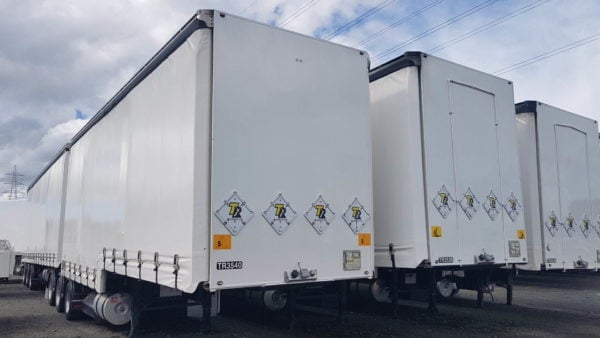Some chemicals need to be placarded for both a primary and subsidiary risk. Both the primary and subsidiary risks must be considered when segregating incompatible dangerous goods, unless they are gas bottles being transported using appropriate equipment, in which case the subsidiary risk can be ignored.

The following examples represent just a few; there are many more.
- UN 1053 Hydrogen Sulphide has a primary risk of 2.3 and a subsidiary risk of 2.1
- UN 1070 Nitrous Oxide has a primary risk of 2.2 and a subsidiary risk of 5.1. It is used for pain relief and as a sedative.
- UN 1079 Sulphur Dioxide has a primary risk of 2.3 and a subsidiary risk of 8. It’s produced when burning fossil fuels. It is used to manufacture sulphuric acid, paper and food preservatives
- UN 1230 Methanol has a primary risk of 3, a subsidiary risk of 6.1 and a packing group II. It is used in thousands of everyday products such as plastics, paints and construction materials.
- UN 1360 Calcium Phosphide has a primary risk 4.3, a subsidiary risk 6.1 and a packing group I. It’s used to kill rodents, as well as to make explosives and fireworks.
- UN 1436 Zinc Powder has a primary risk of 4.3, a subsidiary risk 4.2 and packing groups I, II and III. It’s used as a galvanising anti-corrosion treatment for steel.
If we use the example of methanol, its main risk is flammability, but it is also toxic.
Packing group I is high danger, packing group II is medium danger and packing group 3 is low danger. The precedence works in that order.
In terms of the precedence with the hazard class, it follows this order, unless specified:
- Class 7 radioactive (except when in excepted packages)
- Class 1 explosive
- Class 2 gases
- Class 3 liquids
- Class 4.1 solids
- Class 4.2 solids
- Class 5.1 oxidisers
- Class 6.1 toxic, or class 3 liquids, with packing group I by inhalation
- Class 6.2 infectious substances.
